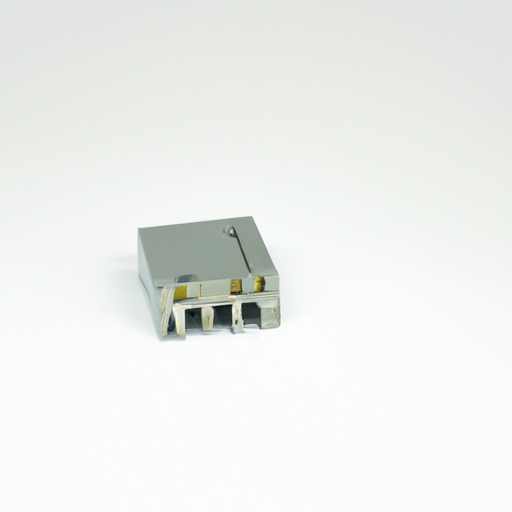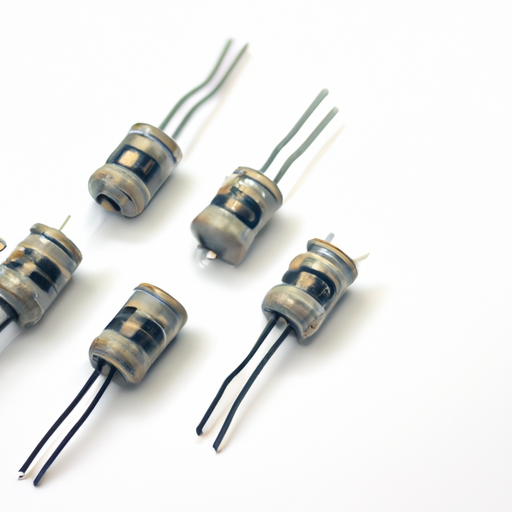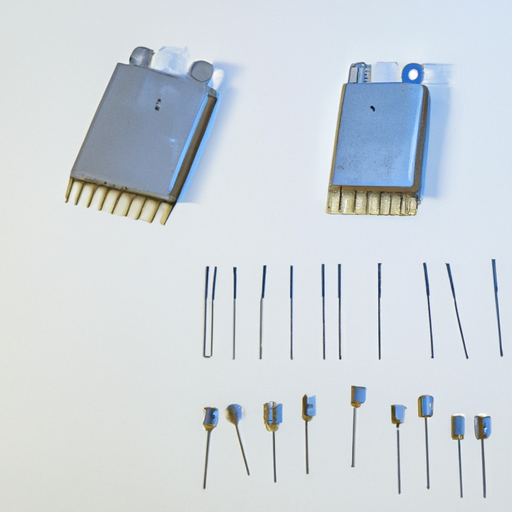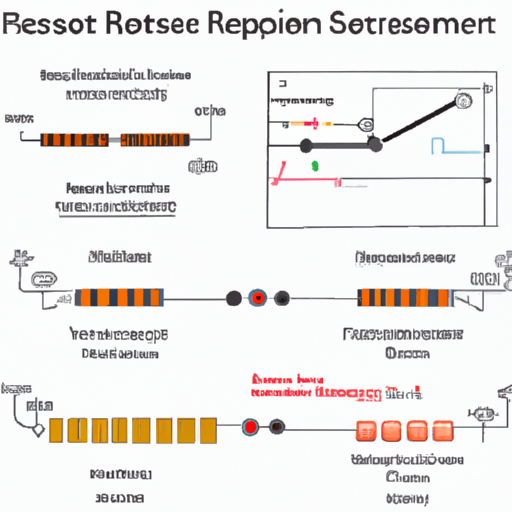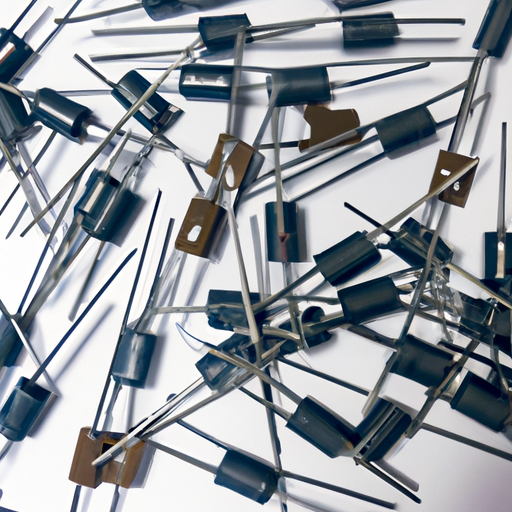What is the Resistor? What is the Role of the Product in Practical Applications?
I. Introduction
In the realm of electronics, resistors play a fundamental role in the design and functionality of electrical circuits. A resistor is a passive electrical component that limits or regulates the flow of electrical current in a circuit. By providing a specific amount of resistance, these components are essential for controlling voltage and current levels, ensuring that electronic devices operate safely and effectively. This blog post will explore the various types of resistors, their roles in electrical circuits, practical applications across different industries, challenges faced in their use, and future trends in resistor technology.
II. Understanding Resistors
A. Basic Principles of Resistance
At the core of understanding resistors is Ohm's Law, which states that the current (I) flowing through a conductor between two points is directly proportional to the voltage (V) across the two points and inversely proportional to the resistance (R) of the conductor. This relationship is expressed mathematically as:
\[ V = I \times R \]
The unit of measurement for resistance is the ohm (Ω), named after the German physicist Georg Simon Ohm. This fundamental principle underpins the operation of resistors in various applications.
B. Types of Resistors
Resistors come in various types, each serving specific functions in electronic circuits:
1. **Fixed Resistors**: These resistors have a constant resistance value and are commonly used in circuits where a specific resistance is required.
2. **Variable Resistors**: These include potentiometers and rheostats, which allow users to adjust the resistance value. Potentiometers are often used in volume controls, while rheostats are used in applications requiring variable current.
3. **Specialty Resistors**: These include thermistors, which change resistance with temperature, and photoresistors, which change resistance based on light exposure. These resistors are crucial in temperature sensing and light detection applications.
C. Construction and Materials
The construction of resistors varies based on their type and intended application. Common materials include:
1. **Carbon Composition**: Made from a mixture of carbon and a binding material, these resistors are inexpensive and widely used in general applications.
2. **Metal Film**: These resistors offer better precision and stability than carbon composition resistors, making them suitable for high-accuracy applications.
3. **Wirewound**: Constructed by winding a metal wire around a ceramic or plastic core, wirewound resistors can handle higher power ratings and are often used in power applications.
4. **Other Materials**: Newer technologies are exploring the use of materials like conductive polymers and nanomaterials to enhance performance and reduce size.
III. The Role of Resistors in Electrical Circuits
A. Current Limiting
One of the primary roles of resistors is to limit current flow in a circuit. By doing so, they protect sensitive components from damage due to excessive current. For example, in LED circuits, resistors are used to ensure that the current flowing through the LED does not exceed its rated capacity, preventing burnout.
B. Voltage Division
Resistors are also used in voltage divider circuits, where they create reference voltages for other components. This is particularly useful in signal conditioning, where a specific voltage level is required for proper operation of sensors or microcontrollers.
C. Biasing Active Components
In circuits involving transistors and operational amplifiers, resistors are essential for biasing these active components. Proper biasing ensures that transistors operate in the desired region of their characteristic curves, which is crucial for amplification and switching applications.
D. Signal Filtering
Resistors, when combined with capacitors, form RC circuits that are used for filtering signals. These circuits can attenuate unwanted frequencies, allowing only the desired signal to pass through. This is particularly important in audio applications, where clarity and fidelity are paramount.
IV. Practical Applications of Resistors
A. Consumer Electronics
Resistors are ubiquitous in consumer electronics. In audio equipment, they help control volume levels and tone adjustments. In televisions and displays, resistors are used in various circuits to manage power and signal integrity.
B. Industrial Applications
In industrial settings, resistors play a vital role in automation systems and power management. They are used in control circuits to ensure that machinery operates within safe parameters, preventing overloads and failures.
C. Automotive Applications
Modern vehicles rely heavily on electronic systems, and resistors are integral to their operation. They are used in engine control units to manage fuel injection and ignition timing, as well as in safety systems like airbags and anti-lock braking systems.
D. Medical Devices
In the medical field, resistors are critical components in monitoring equipment and diagnostic tools. They help regulate signals in devices such as ECG machines and blood pressure monitors, ensuring accurate readings and patient safety.
E. Renewable Energy Systems
As the world shifts towards renewable energy, resistors are increasingly used in solar inverters and wind turbine controllers. They help manage power flow and ensure that energy is efficiently converted and utilized.
V. Challenges and Considerations
A. Heat Dissipation
One of the significant challenges with resistors is heat dissipation. As resistors limit current, they generate heat, which can affect their performance and longevity. Understanding power ratings and implementing thermal management strategies is crucial in high-power applications.
B. Tolerance and Precision
The tolerance of a resistor indicates how much its actual resistance can vary from its stated value. In critical applications, such as precision measurement devices, using resistors with low tolerance is essential to ensure accuracy.
C. Environmental Factors
Resistors are also affected by environmental factors such as temperature and humidity. The temperature coefficient of resistance indicates how much a resistor's value changes with temperature, which is an important consideration in circuit design.
VI. Future Trends in Resistor Technology
A. Advancements in Materials
The future of resistor technology is being shaped by advancements in materials science. Nanotechnology is paving the way for smaller, more efficient resistors, while flexible and printed resistors are opening new possibilities in wearable electronics and flexible devices.
B. Integration with Smart Technologies
As the Internet of Things (IoT) continues to grow, resistors will play a crucial role in smart devices and smart grids. Their ability to manage and control electrical signals will be vital in creating interconnected systems that enhance efficiency and functionality.
C. Sustainability and Eco-Friendly Practices
With increasing awareness of environmental issues, the electronics industry is focusing on sustainability. This includes developing eco-friendly resistors and implementing recycling practices to minimize waste and energy consumption.
VII. Conclusion
In conclusion, resistors are indispensable components in the world of electronics, serving a multitude of roles in various applications. From consumer electronics to industrial systems, their ability to control current and voltage is crucial for the safe and efficient operation of devices. As technology continues to evolve, resistors will remain relevant, adapting to new challenges and opportunities in the ever-changing landscape of electronics. The future of resistor technology promises exciting advancements that will further enhance their functionality and sustainability, ensuring their continued importance in modern technology.


